The Data Encryption Standard (DES)
The Data Encryption Standard (DES) is a symmetric-key block cipher published by the National Institute of Standards and Technology (NIST).
DES is an implementation of a Feistel Cipher. It uses 16 round Feistel structure. The block size is 64-bit. Though the key length is 64-bit, DES has an effective key length of 56 bits, since 8 of the 64 bits of the key are not used by the encryption algorithm (function as check bits only). General Structure of DES is depicted in the following illustration −
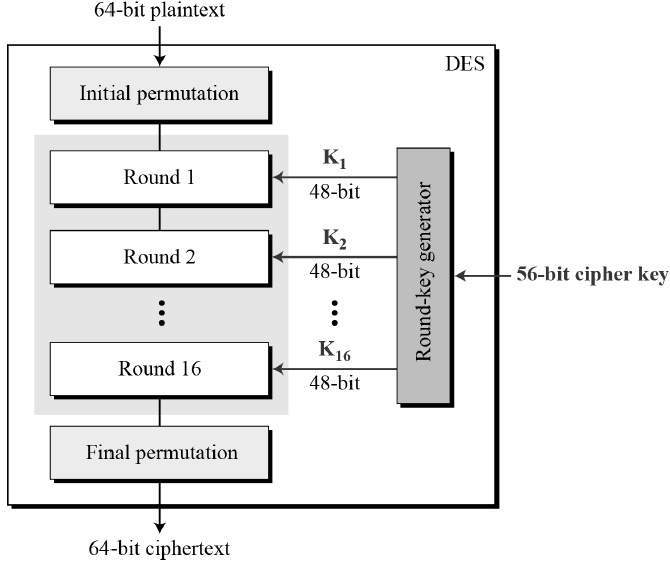
Since DES is based on the Feistel Cipher, all that is required to specify DES is −
- Round function
- Key schedule
- Any additional processing − Initial and final permutation
Initial and Final Permutation
The initial and final permutations are straight Permutation boxes (P-boxes) that are inverses of each other. They have no cryptography significance in DES. The initial and final permutations are shown as follows −
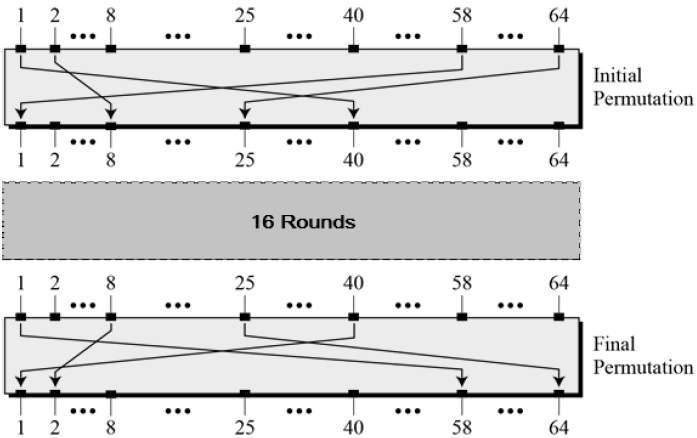
Round Function
The heart of this cipher is the DES function, f. The DES function applies a 48-bit key to the rightmost 32 bits to produce a 32-bit output.

- Expansion Permutation Box − Since the right input is 32-bit and round key is a 48-bit, we first need to expand right input to 48 bits. Permutation logic is graphically depicted in the following illustration −

- The graphically depicted permutation logic is generally described as the table in DES specification illustrated as shown −
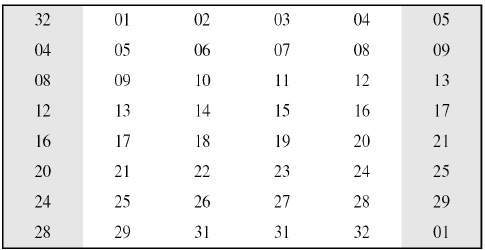
- XOR (Whitener). − After the expansion permutation, DES does XOR operation on the expanded right section and the round key. The round key is used only in this operation.
- Substitution Boxes. − The S-boxes carry out the real mixing (confusion). DES uses 8 S-boxes, each with a 6-bit input and a 4-bit output. Refer the following illustration −

- The S-box rule is illustrated below −
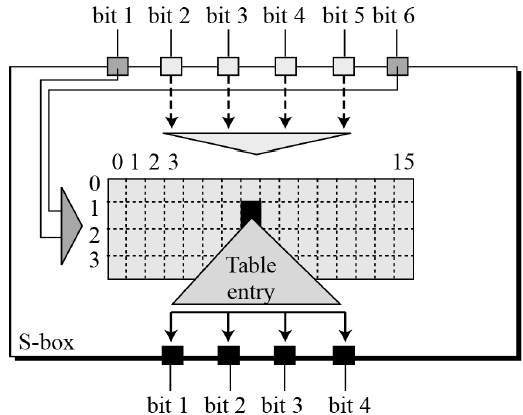
- There are a total of eight S-box tables. The output of all eight s-boxes is then combined into the 32-bit section.
- Straight Permutation − The 32-bit output of S-boxes is then subjected to the straight permutation with the rule shown in the following illustration:

Key Generation
The round-key generator creates sixteen 48-bit keys out of a 56-bit cipher key. The process of key generation is depicted in the following illustration −
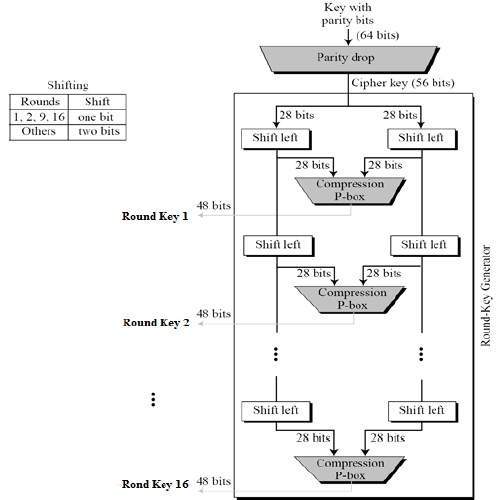
The logic for Parity drop, shifting, and Compression P-box is given in the DES description.
DES Analysis
The DES satisfies both the desired properties of the block cipher. These two properties make cipher very strong.
- Avalanche effect − A small change in plaintext results in the very great change in the ciphertext.
- Completeness − Each bit of ciphertext depends on many bits of plaintext.
During the last few years, cryptanalysis has found some weaknesses in DES when key selected are weak keys. These keys shall be avoided.
DES has proved to be a very well designed block cipher. There have been no significant cryptanalytic attacks on DES other than exhaustive key search.
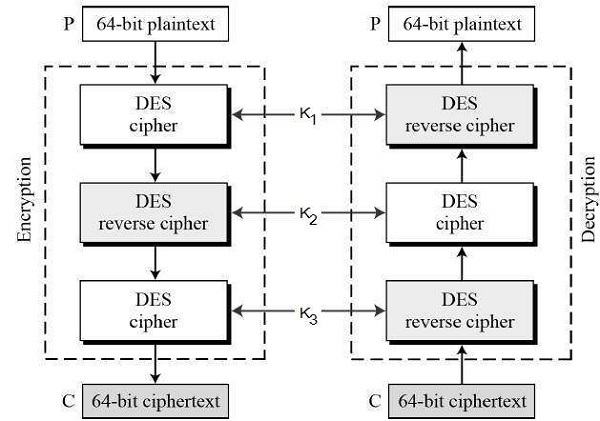
The speed of exhaustive key searches against DES after 1990 began to cause discomfort amongst users of DES. However, users did not want to replace DES as it takes an enormous amount of time and money to change encryption algorithms that are widely adopted and embedded in large security architectures.
The pragmatic approach was not to abandon the DES completely, but to change the manner in which DES is used. This led to the modified schemes of Triple DES (sometimes known as 3DES).
Incidentally, there are two variants of Triple DES known as 3-key Triple DES (3TDES) and 2-key Triple DES (2TDES).
3-KEY Triple DES
Before using 3TDES, user first generate and distribute a 3TDES key K, which consists of three different DES keys K1, K2 and K3. This means that the actual 3TDES key has length 3×56 = 168 bits. The encryption scheme is illustrated as follows −

The encryption-decryption process is as follows −
- Encrypt the plaintext blocks using single DES with key K1.
- Now decrypt the output of step 1 using single DES with key K2.
- Finally, encrypt the output of step 2 using single DES with key K3.
- The output of step 3 is the ciphertext.
- Decryption of a ciphertext is a reverse process. User first decrypt using K3, then encrypt with K2, and finally decrypt with K1.
Due to this design of Triple DES as an encrypt–decrypt–encrypt process, it is possible to use a 3TDES (hardware) implementation for single DES by setting K1, K2, and K3 to be the same value. This provides backwards compatibility with DES.
Second variant of Triple DES (2TDES) is identical to 3TDES except that K3is replaced by K1. In other words, user encrypt plaintext blocks with key K1, then decrypt with key K2, and finally encrypt with K1 again. Therefore, 2TDES has a key length of 112 bits.
Triple DES systems are significantly more secure than single DES, but these are clearly a much slower process than encryption using single DES.



Comments
Post a Comment